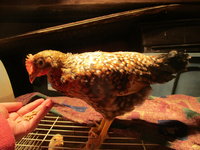- Thread starter
- #21
Diamond Peno
Songster
Exactly but unless you knew genealogy for both rooster and hen.since ee and oe are mixed it's almost impossible to predict egg color with 100% accuracy.
My mother, father, and both their parents all have black hair brown eyes.I have blue eyes light brown hair.Daughter has blonde hair blue eyes.Her Mother and grand parents on mother side have brown eyes brown hair.Blue eye color isn't supposed to be dominate gene yet me and my daughter have blue eyes.I have 3,siblings all brown eyes.
Yes blue is recessive I breed blue rats and in order to get blue you have to breed for it. unless there is a hidden as I have breed to rats lines known and blues popped up but way way back in the line was blue just hidden till the right pare where combined.









